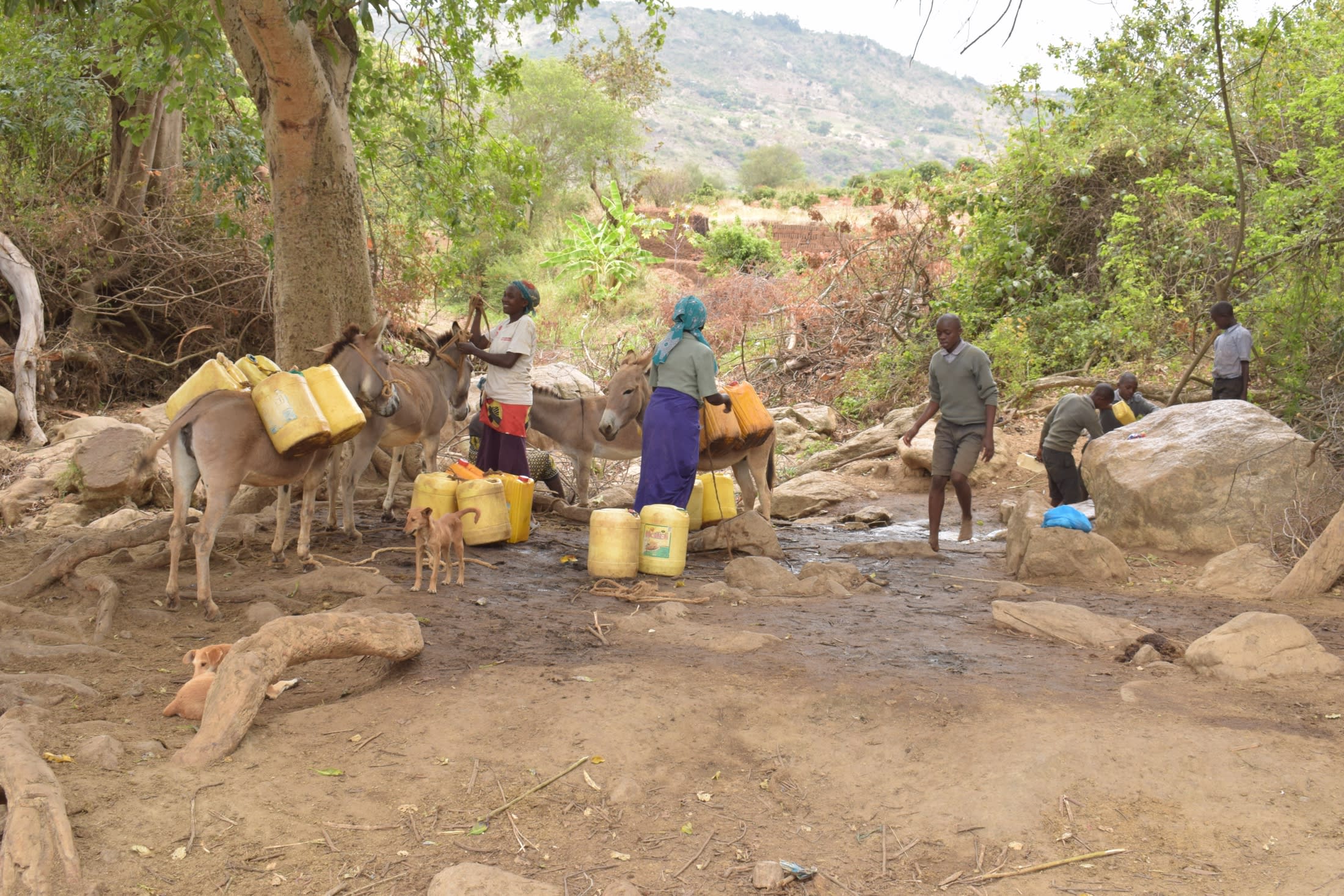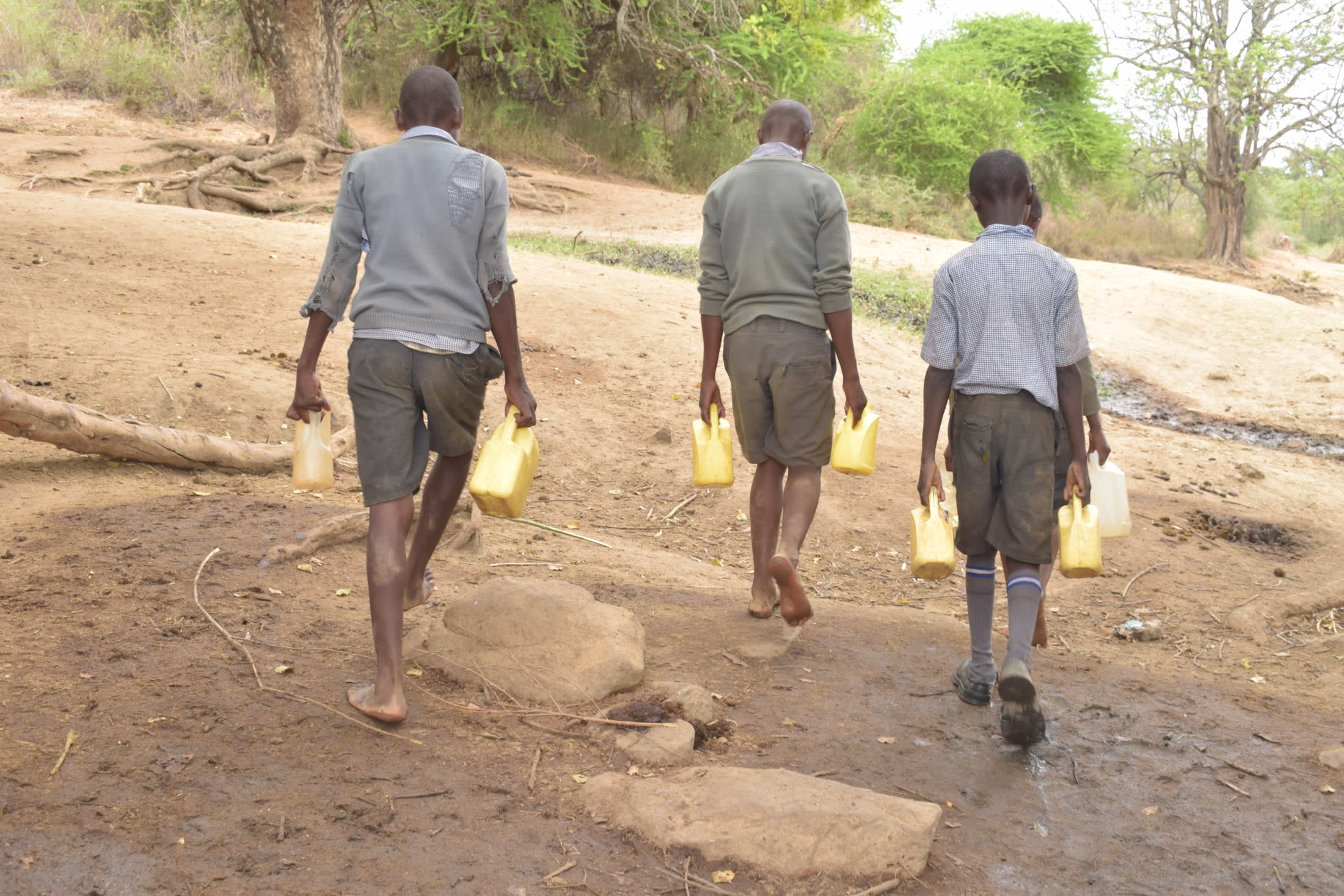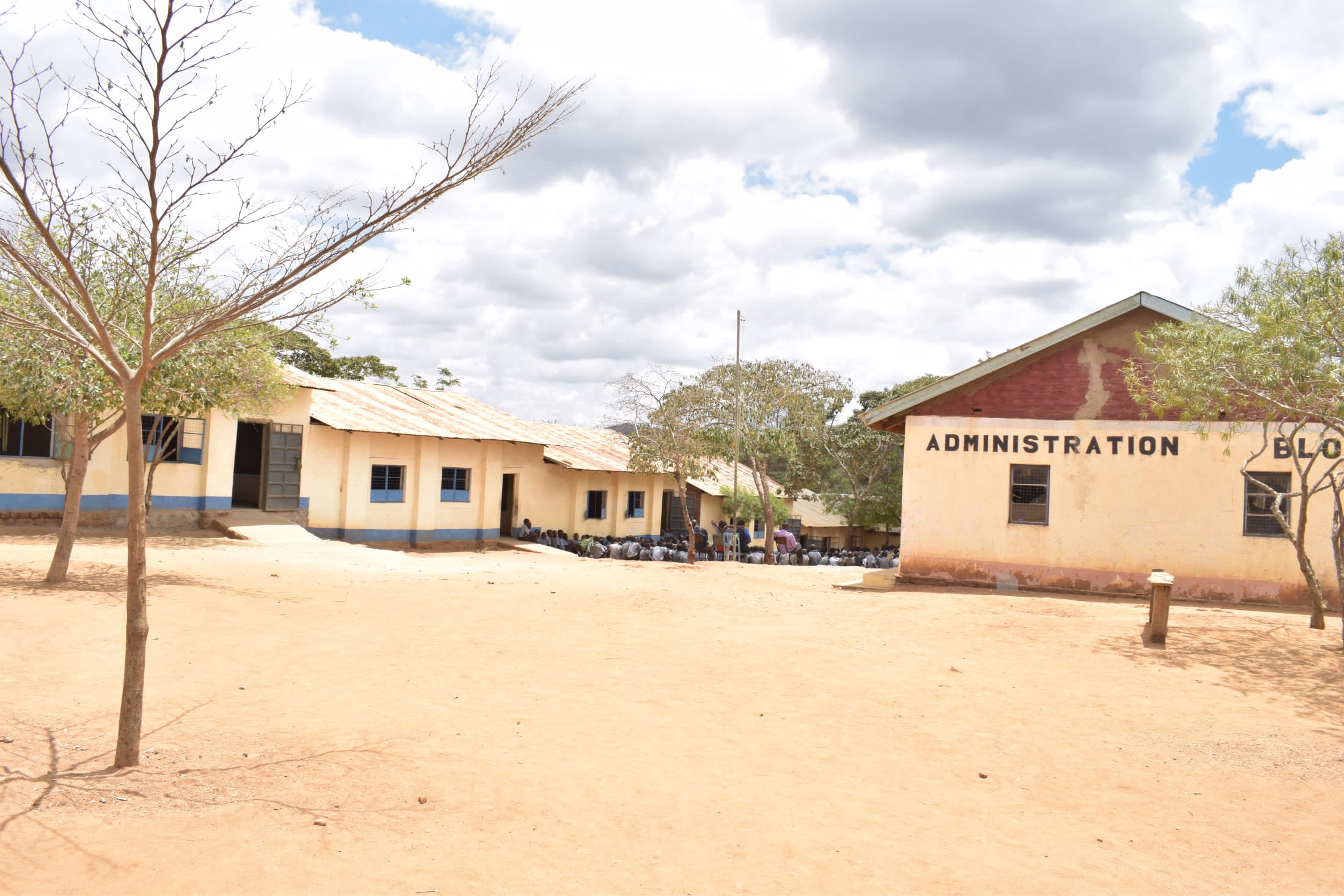In order to have water for the day, students at Kithoni Primary School must travel 1.5 kilometers to a river channel to fill their containers with water from a seasonal and unprotected spring.
It is depended upon by the whole village as it is the sole water point in Kithoni. Community members and livestock flock to the water point in search of water, with the surrounding environment consequently littered with animal waste and other dirty materials that contaminate the water.

The students must then walk all the way back to school with the water they fetched. Academic time is lost due to this process and then students will fall ill from time to time due to drinking the unsafe water. This cycle makes it difficult for students to realize their potential in school.
"In the morning, we are sent to the water point to fetch water for cooking and other uses," said 13-year-old Mutio Muathe.

"It deprives us of our valuable school time which we could use for personal studies and consultations with our teachers to help improve our grades."
Kithoni Primary School was started by the Kithoni Catholic Church in 1981 under the Catholic Diocese of Machakos. The church initiated construction of its first buildings and acquired the piece of land where the school sits. The school was later handed over to the government to operate under the management of Makueni District Education Board. The school has no official sponsors and has grown through the support of parents and the government.

The school is located in a peaceful, rural area which is relatively vegetated comprised of planted exotic trees and homegrown indigenous trees. Some of the school buildings look old, while others are newly constructed buildings in decent and good shape.
The levels of hygiene and sanitation at the school are below average due to lack of adequate water supply within the school. This has led to poor cleanliness levels at the latrines and other school other facilities.
"This has made the learning environment for the kids not that good," said deputy headteacher Stella Kimanthi when talking about the school's sanitation problems.
Here’s what we’re going to do about it:
Rainwater Catchment Tank
We will build a 104,000-liter rainwater catchment tank for this school. This water will benefit the students, teachers, and supplementary staff. Parents will mobilize the materials needed for construction, such as sand and stone. They will also lend some strong arms to help with the actual construction.
The huge capacity of this tank makes the others look tiny in comparison; 104,000 liters should be enough water to carry students and staff through the entire dry season. As soon as the tank has time to cure, it can begin to collect rainwater for drinking, cooking, and cleaning!
Training
Students and staff will be trained for one day. Those in attendance will form a school health club that will promote good hygiene and sanitation practices both at school and home. They will learn all of the steps to proper handwashing, how to treat water, and how to keep their environment clean. The school will also be taught how to best oversee and maintain their new rainwater catchment tank and handwashing stations.
Handwashing Stations
Three handwashing stations will be delivered at the project’s completion. These are 1,000-liter plastic tanks fitted with four taps. The health club and school management will be responsible for making sure tanks are filled with water and that a cleaning agent such as soap or ash is available.

 Rainwater Catchment
Rainwater Catchment
 Rehabilitation Project
Rehabilitation Project





























